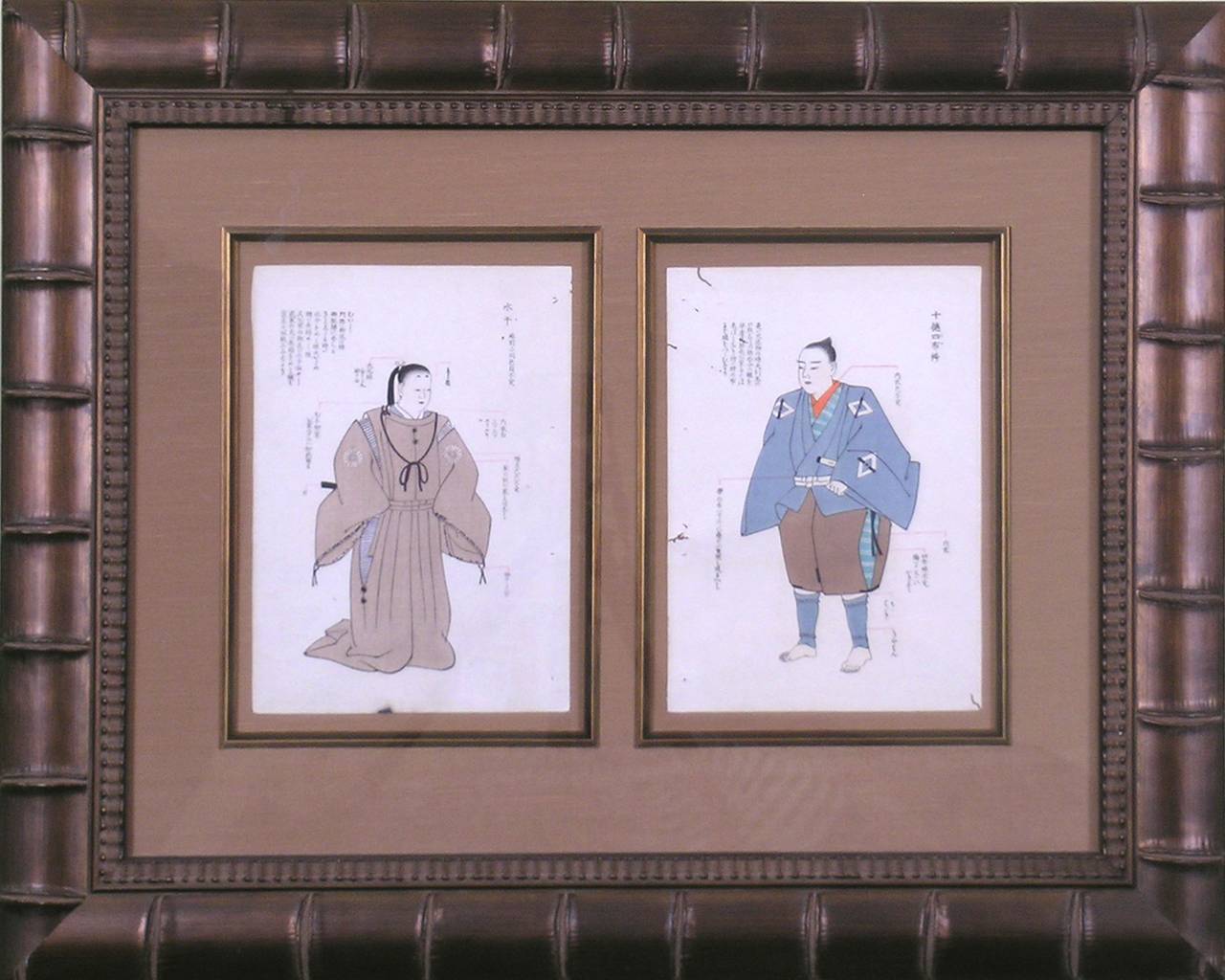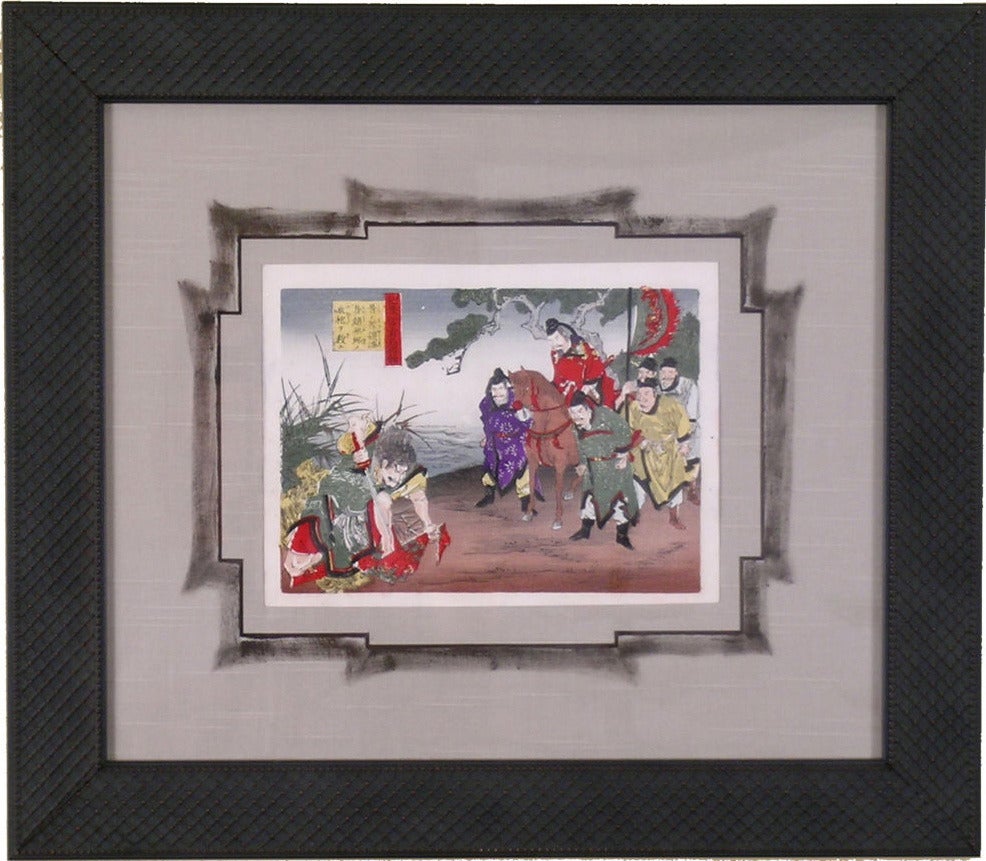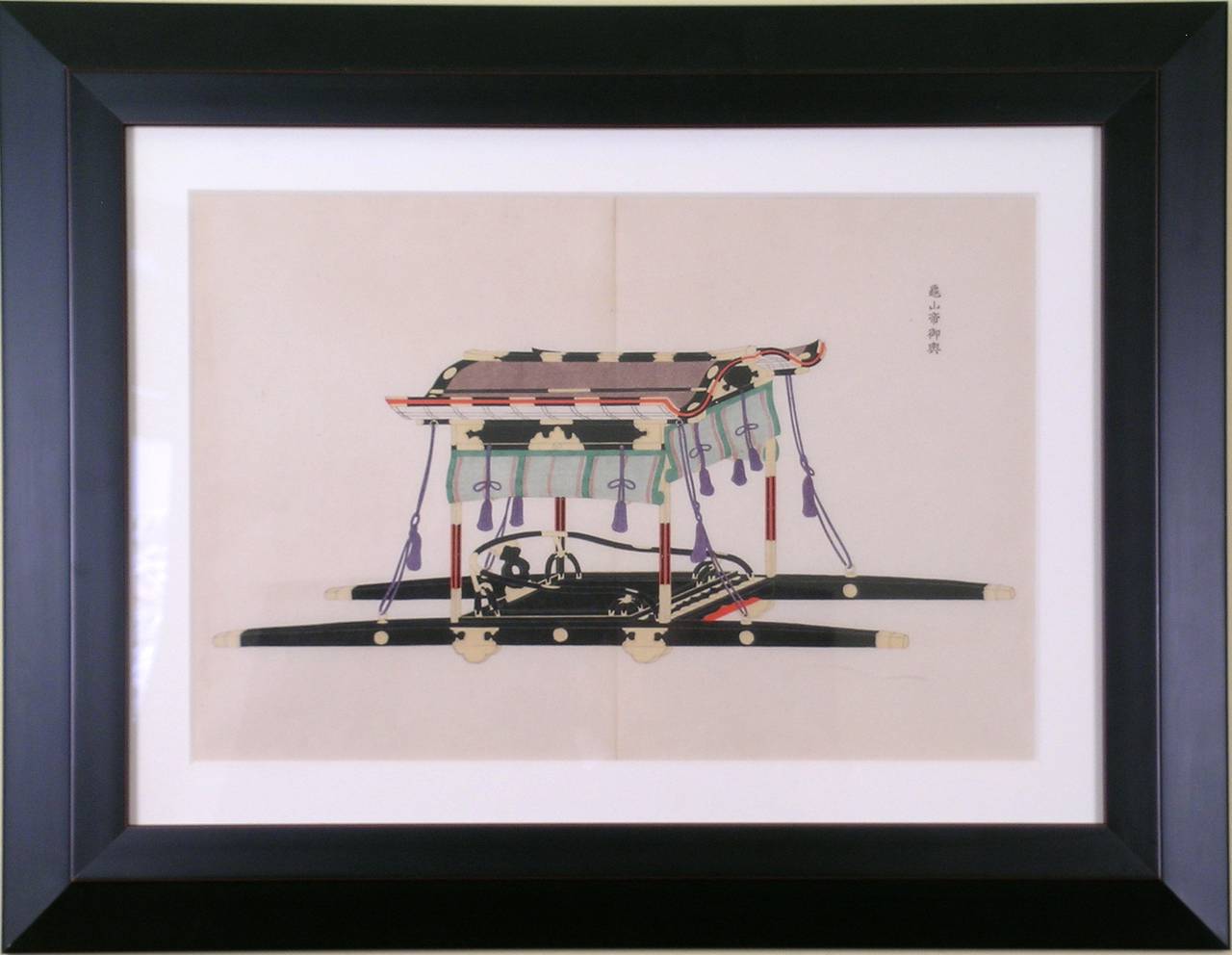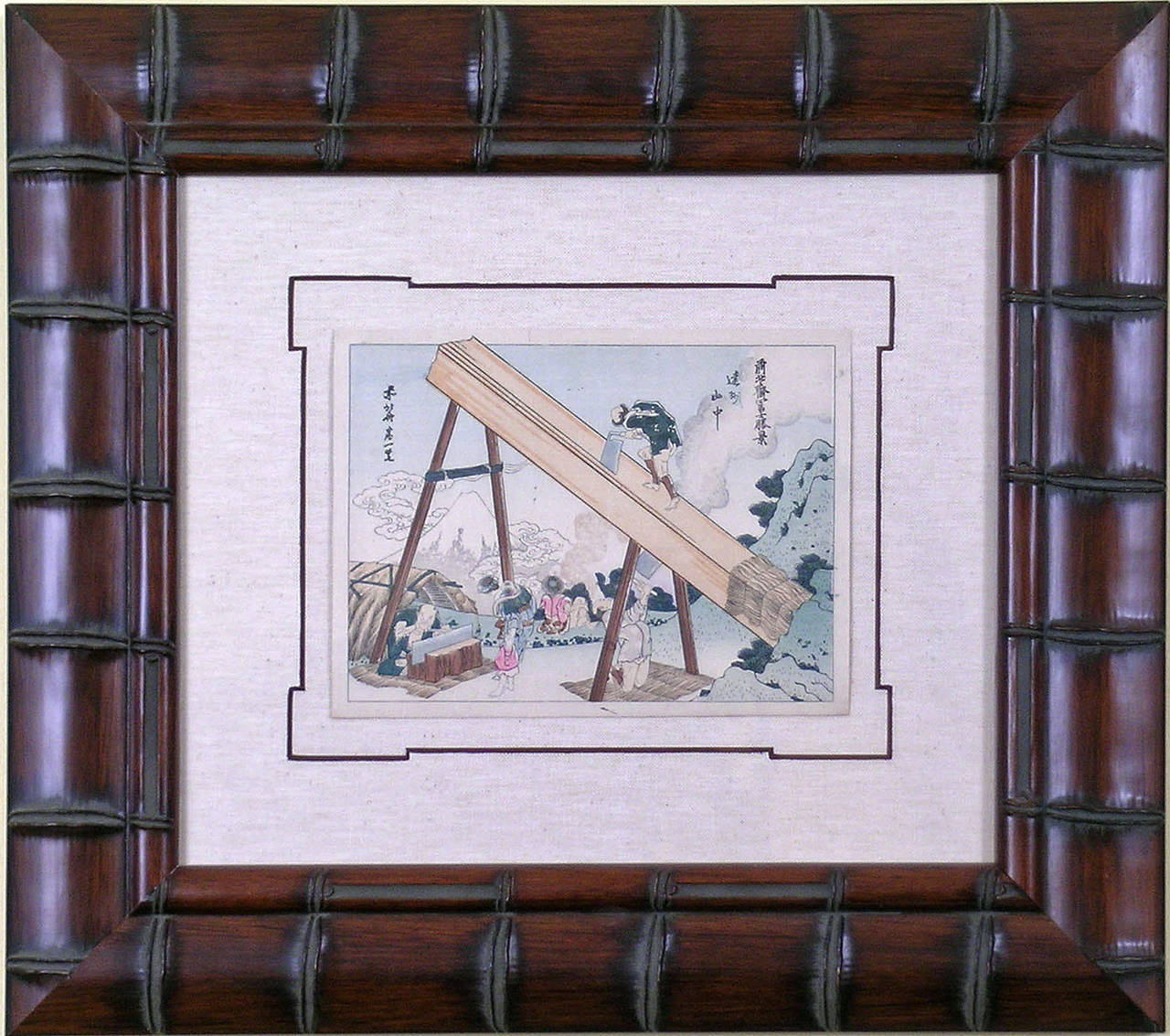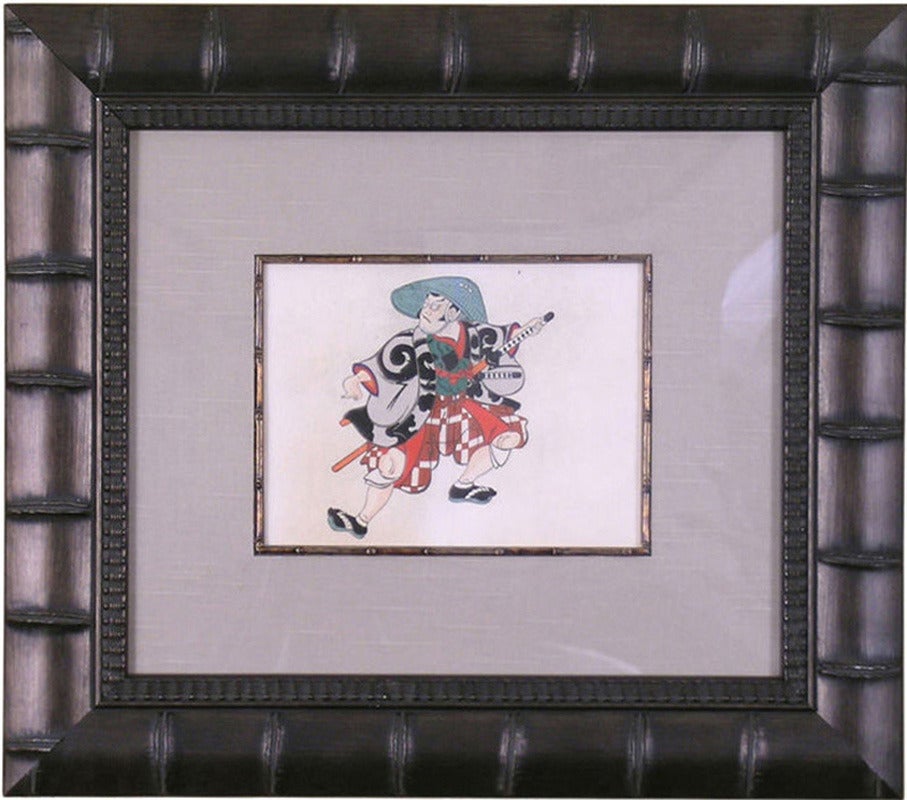Want more images or videos?
Request additional images or videos from the seller
1 of 3
UnknownIkebana - Carnations and Astilbeca 1895
ca 1895
About the Item
Ikebana
Japanese Woodblocks.
Meiji Period. Circa 1895.
A disciplined art form, Ikebana seeks to bring nature and man together. The emphasis is on form and simplicity of design. Although minimalistic, form is of the utmost importance. There is also a spiritual side to Ikebana with silence being a must throughout its practice.
The enthusiasm for nature prints has spanned the centuries. By the mid-nineteenth century these works, illustrating varieties of flowers in naturalistic styles, had reached a peak of perfection. Each artistic form in traditional printing sought to enhance the beauty of botany. In the woodblock style, as it true for engravings and lithographs, it is imperative that the carving of each block be exacting as they must create an image true to that seen in nature.
Woodblock printing flowered in the Edo Period in Japan, mid to late 19th century, and is still considered an art form of great precision and beauty. This style captures both the vitality and life inherent to the flower. Following the artist’s sketch, an image is carved into a block of wood to be transferred to paper in the same manner in which a painter applies his art to a canvas. Black inks form the outline of the flower and color inks are applied following nature’s guide. The woodblock is then pressed to hand-made screened paper which is then hung to dry. This lengthy process of composing a single image can take weeks. These images reflect a quality similar to watercolor and graphite resulting in a stunning and life-like portrayal.
- Creation Year:ca 1895
- Dimensions:Height: 9.5 in (24.13 cm)Width: 11.5 in (29.21 cm)
- Medium:
- Movement & Style:
- Period:
- Condition:Very good condition with minor stain on seam. Crisp image with beautiful original color. Framed to museum specifications using archival matting, backing, hinging. Suede mat. Glazed with ultra-violet filtering Plexiglas.
- Gallery Location:Florham Park, NJ
- Reference Number:
About the Seller
5.0
Vetted Seller
These experienced sellers undergo a comprehensive evaluation by our team of in-house experts.
1stDibs seller since 2014
164 sales on 1stDibs
Typical response time: 2 hours
- ShippingRetrieving quote...Ships From: Florham Park, NJ
- Return PolicyA return for this item may be initiated within 1 day of delivery.
More From This SellerView All
- Kimono Design Men - Brown and BlueBy Matsui YuokuLocated in Florham Park, NJREISHIN GACHO (Album of Beautiful Designs) Japanese Kimono Designs Matsui Yuoku, Painter Japan, 1900 (Meiji 33) Honda Ichijirou, Publisher Woodblock Prints Celebrated as mu...Category
Early 1900s Academic Prints and Multiples
MaterialsWoodcut
- Samurai: Looking OnLocated in Florham Park, NJSamurai Warriors Meji 33 ( 1900) Woodblocks Original Hand-Color Woodblock printing flowered in the Edo Period in Japan, mid to late 19th century, and is still considered an art form of great precision and beauty. This style captures both the vitality and life inherent to the flower. Following the artist’s sketch, an image is carved into a block of wood to be transferred to paper in the same manner in which a painter applies his art to a canvas. Black inks form the outline of the flower and color inks are applied following nature’s guide. The woodblock is then pressed to hand-made screened paper which is then hung to dry. This lengthy process of composing a single image can take weeks. These images reflect a quality similar to watercolor and graphite resulting in a stunning and life-like portrayal. Samurai were the military nobility of medieval and early-modern Japan. According to translator William Scott Wilson...Category
Early 1900s Academic Prints and Multiples
MaterialsWoodcut
- BambooBy Kono BaireiLocated in Florham Park, NJKono Bairei (1844 – 1895) One Hundred Flowering Plants. Japan, 1901. (Posthumous.) Woodblock Print. 15 x 11. Okura Magobei, Publisher. The enthusiasm for nature prints transcends the centuries. “One Hundred Flowering Plants” is a mid-nineteenth century work illustrating varieties of flowers and plants in naturalistic styles. Traditional woodblock printing enhances the beauty of each work. The artist must carve different woodblocks for every color he wishes to transfer to paper. In this style of printing it is imperative that the register of each woodblock be exact as they must match perfectly to create an image without blurring. In addition to his illustrated flower books...Category
Early 1900s Academic Prints and Multiples
MaterialsWoodcut
- Transport: One LitterBy Yosha Zuko FuzuLocated in Florham Park, NJYosha Zuko Fuzu Meiji 33 (1900) Writer: Kosugi Onson, Imaizumi Teisuke Publisher: Yoshikawa Hanshichi The Japanese litters and palanquins are much more than a practical vehicle...Category
Early 19th Century Academic Prints and Multiples
MaterialsWoodcut
- Construction #2By Katsushika HokusaiLocated in Florham Park, NJFUGAKU HYAKKEI (Views of Mt. Fuji) Katsushika Hokusai (1760-1849) Woodblock Print 1834-5 Edo period It signifies the long history and the aspirations of the race; it is a tok...Category
Early 19th Century Academic Prints and Multiples
MaterialsWoodcut
- Kabuki Theatre: FuwaLocated in Florham Park, NJKabuki Theatre Meji 33 (ca1900) Woodblock Original Hand-Color. Woodblock printing flowered in the Edo Period, mid to late 19th century, and is still considered an art form of gre...Category
Early 1900s Academic Prints and Multiples
MaterialsWoodcut
You May Also Like
- Louis I of France as a Roman Emperor, in profile to the rightBy Christoffel JegherLocated in Fairlawn, OHLouis I of France as a Roman Emperor, in profile to the right Chiaroscuro woodcut, 1631-1633 Unsigned (as usual) After a drawing by Hubert Goltzius (1526-1583)...Category
17th Century Academic Portrait Prints
MaterialsWoodcut, ABS
- Greek Architecture Blueprint of Ancient Amphitheatre Cyanotype Print, WatercolorBy Kind of CyanLocated in Barcelona, ESThis is an exclusive handprinted limited edition cyanotype. Details: + Title: Ancient Roman Amphitheater + Year: 2022 + Edition Size: 50 + Stamped and Certificate of Authenticity provided + Measurements : 70x100 cm (28x 40 in.), a standard frame size + All cyanotype prints...Category
2010s Academic Still-life Photography
MaterialsPhotographic Film, Woodcut, Emulsion, Watercolor, C Print, Color, Lithog...
- Book, John Rylands Library, Manchester - Contemporary Color PhotographyBy Richard HeepsLocated in Cambridge, GBPhotographed in 1987 in John Rylands Library, Manchester and was part of Richard Heeps iconic series 'Ordinary Places', which was his first colour collection. The exhibition was show...Category
1980s Academic Color Photography
MaterialsPhotographic Paper, C Print, Color, Silver Gelatin
- Flowering Peppermint Plants: A 17th C. Besler Hand-colored Botanical EngravingLocated in Alamo, CAThis is a hand-colored copper plate engraving entitled "Pulegium Cervinum, Pseudo Pulegium Struthium, Pulegium Regium", depicting flowering Peppermint, Weld and Pennyroyal plants res...Category
1640s Academic Still-life Prints
MaterialsEngraving
- “Haughton in the County of Nottingham” (Near Newark Upon Trent)By Johannes KipLocated in Southampton, NYAn original hand colored engraving by Johannes 'Jan' Kip (1653-1722) of Haughton in the County of Nottinghamshire, one of the seats of Prince John Duke of ...Category
Early 1700s Academic Landscape Prints
MaterialsEngraving
- “Chess Players”Located in Southampton, NYARTIST Hey, Paul, 1867-1952, artist TITLE Chess players OTHER TITLE(S) Die Schachspieler PHYSICAL DESCRIPTION 1 print : etching ; sheet size 11 1/2" x 15" (30 x 39 cm.) Date: 1898 SUMMARY Three men are sitting around a chess board, two are playing and one is observing. The men are all late middle aged to old aged. The print has some fine details, and cross hatching is used extensively. On the table, besides the the chess set, are two coffee cups and a glass of water. Lower left in margin in pencil “original etching” in German. Lower right margin in pencil “chess players” written in German. No visible signature. The same etching by Paul Hey...Category
1890s Academic Figurative Prints
MaterialsArchival Paper, Etching
Recently Viewed
View AllMore Ways To Browse
Antique And Stunning Art
Antique Canvas Prints
Pressed Flowers Art
Woodcut Flowers
Antique Carnation
Woodblock Print Of A Beauty
Japanese Wood Block Prints
Mid Century Wood Block Print
Japanese Woodblock Beauties
Wood Block Still Life
Block Print Flowers
Nature Woodblock
Antique Wood Block Prints
Woodblock Print Flower
Edo Period Carved Wood
Late Edo Period Screens
Antique Pressed Flowers
Meiji Woodblock
